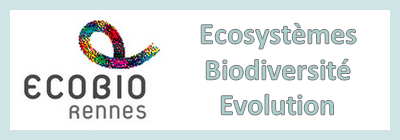Using hybrid automata modelling to study phenotypic plasticity and allocation strategies in the plant mycorrhizal mutualism
Résumé
Plants are exemplified by high plasticity in resource allocation strategies which allows them to maximize their fitness under changing resource conditions. In many plant species, obtaining resources involves mutualistic interactions with arbuscular mycorrhizal fungi (AMF), where plants provide the AMF with sugars in exchange for soil nutrients like phosphorus (P). These nutrient exchange rates have high context dependency, influenced by both the cooperative level of the AMF species involved (a qualitative trait) and the ambient nutrient concentrations in the soil (a quantitative value). Because this context dependency arises from a mix of both quantitative and qualitative factors, standard ordinary differential equation (ODE) modeling methods often complicate the representation of resource allocation strategies. Here, we explore the utility of a hybrid automata modeling framework that can intuitively combine the qualitative AMF traits and quantitative nutrient concentrations. This allows for a better analysis and understanding of phenotypic plasticity in resource allocation in the plant–AMF, and other nutrient exchange mutualisms. We consider a focal strategy in which nutrients are allocated to growth at times of nutrient limitations, and to storage otherwise and ask how this changes plant allocation to growth vs. storage. We first model this system dynamically to show how the plant responds to different environmental conditions and interacts with AMF and show that our hybrid automata model can replicate experimental data from the plant–AMF system. From our work, novel perceptions into the well-studied plant–AMF symbiosis and testable hypotheses can be underlined: (1) leaf biomass does not increase proportionally with the level of AMF cooperation; (2) in the context of multiple AMF simultaneously colonizing a host–plant, a narrow variance of response is observed and explained by an auction-like mechanism of the AMF to acquire C from the plant.
